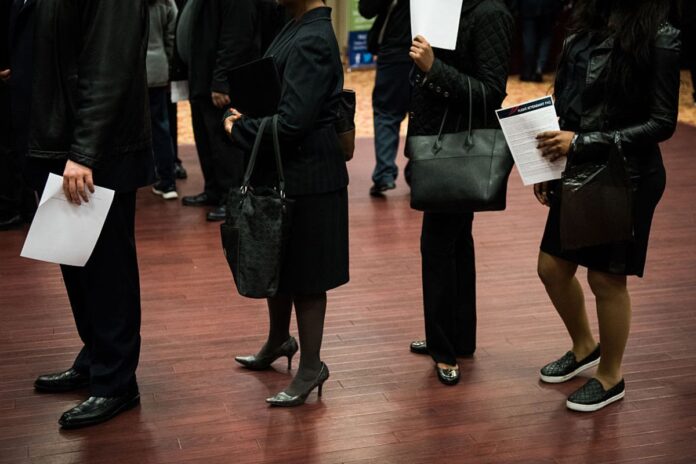WASHINGTON – The United States labor market ended the year with less momentum, as payroll gains cooled by more than forecast and wages rose at the weakest annual pace since 2018, even as unemployment held at a half-century low of 3.5%.
Nonfarm payrolls rose 145,000 after a downwardly revised 256,000 advance the prior month, according to a Labor Department report Friday. That compares with the median estimate of 160,000 in Bloomberg’s survey of economists. Average hourly earnings climbed a below-forecast 2.9% from a year earlier, the first sub-3% reading since July 2018.
Treasury yields fell while the Bloomberg dollar index dipped after the report. Fed funds futures showed the odds of a rate cut this year holding steady and S&P 500 futures remained up on the day.
While the payrolls figure may be consistent with forecasts for gradual moderation, the wage numbers suggest that the labor market isn’t as tight as the unemployment rate indicates. Federal Reserve policy makers are holding interest rates steady after three cuts in 2019 to insure against risks from trade-policy uncertainty and sluggish global growth, though further weakness could raise concerns about the durability of the record-long U.S. expansion.
Although job gains picked up steam in the second half, hiring in 2019 was the slowest since 2011, at 2.11 million. The strength of the labor market will also factor into Donald Trump’s re-election chances in November, with the president repeatedly touting economic gains as a reason he deserves a second term.
Wages for production and nonsupervisory workers rose 3% in December from a year earlier, slowing sharply from the 3.6% pace in October and potentially throwing cold water on the idea that lower-level employees were seeing bigger gains.
One bright spot was the U-6, or underemployment rate, which fell to 6.7%. Some analysts see this as a more accurate reflection of the true labor market as it includes part-time workers who’d prefer a full-time position and those who aren’t actively looking.
Moderating gains
Economists surveyed by Bloomberg last month expect job gains to moderate further in 2020, slipping to a 127,000 monthly pace compared to 176,000 in 2019. In addition to uncertainty stemming from trade, geopolitics and a presidential election, a shrinking pool of available workers makes it tougher for employers to find qualified applicants for more than 7 million open jobs.
On a monthly basis, average hourly earnings increased by 0.1% in December, missing estimates for a 0.3% gain.
The participation rate, or share of working-age people in the labor force, was unchanged at 63.2%, while the employment-population ratio held at 61%.
Revisions subtracted 14,000 jobs from the prior two months, bringing the three-month average to 184,000, the smallest since July. Private employment rose by 139,000 and government payrolls increased by 6,000.
Manufacturers cut payrolls by 12,000 in December, compared with estimates for a gain. The report offers a cleaner read on manufacturing and overall employment after a strike involving 46,000 General Motors Co. workers subtracted from the October count and propped up the November reading.
Retailers boosted jobs by 41,000 in December, the most in almost three years. At the same time, the sector remains in flux, and payrolls were little changed for the full year. Education and health services added 36,000 jobs last month.
The softer-than-expected overall payroll reading may be due – at least in part – to calendar quirks associated with the late timing of the Thanksgiving holiday. If that’s the case, the figure has potential to firm in January.
Annual revisions to the unemployment rate showed no change to previously reported figures in 2019.
Reade Pickert is a reporter for Bloomberg news.













